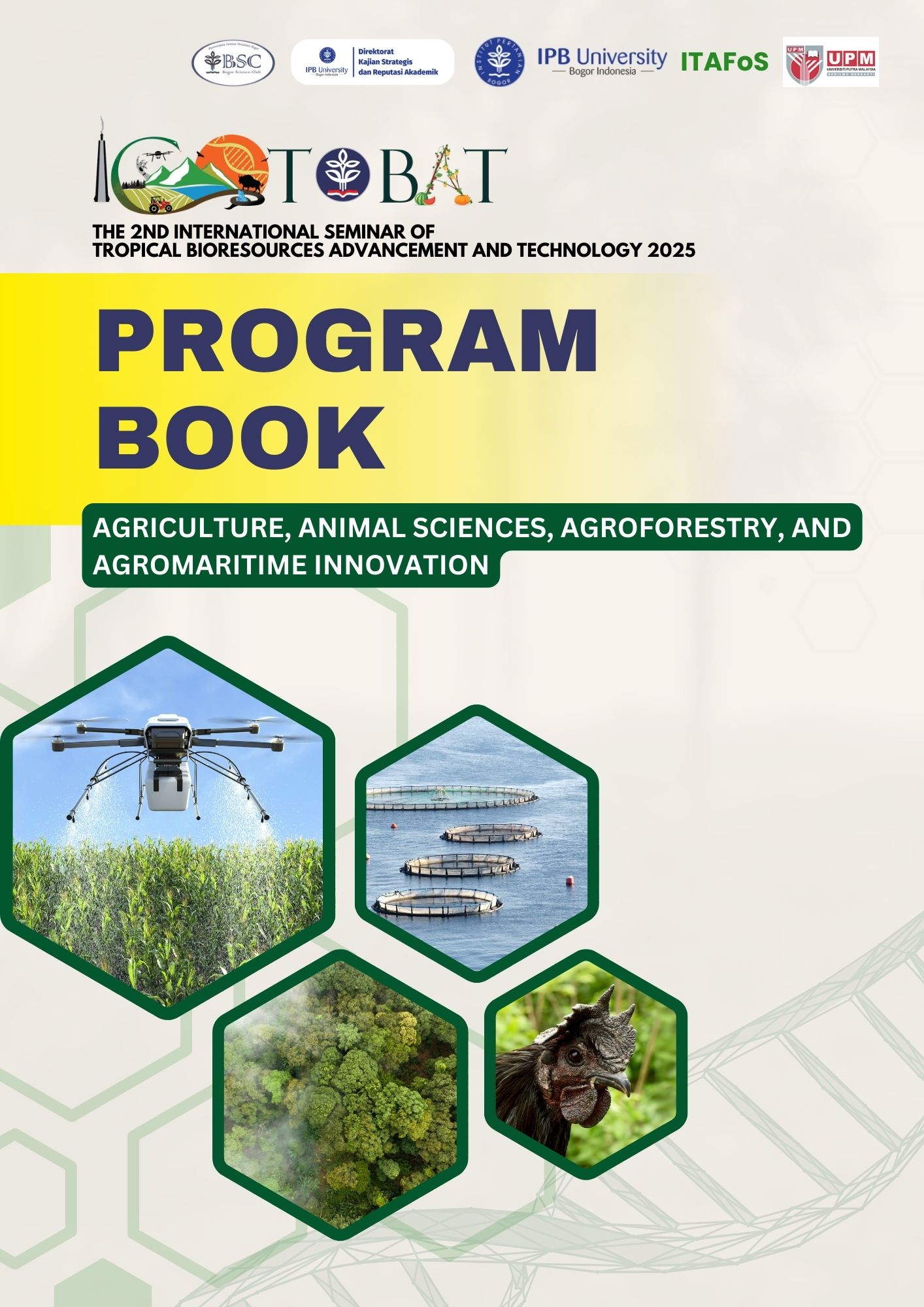CHARACTERIZATION OF ECOENZYMES FROM A MIXTURE OF BEEF CATTLE WASTE AND RICE STRAW
Keywords:
Extracellular enzymes, microbes, beef cattle waste, enzyme activityAbstract
Extracellular enzymes are generally found in microorganisms such as bacteria, fungi, and some protists. One source of enzyme-producing microbes is beef cattle farm waste. The organic material in beef cattle waste will become a growth medium for various decomposer microbes. This research aims to isolate and determine the characteristics of enzymes produced by decomposer microbes in beef cattle waste. The decomposer in beef cattle was grown through an initial decomposition process for 7 days with a C/N ratio 30. The total number of bacteria and molds in the decomposed cattle waste substrate was 1.08 x 1012 CFU/g and 1.65 x 108 CFU/g, respectively. The solution containing crude extracellular enzymes is called ecoenzyme, obtained through the fermentation process of beef cattle waste substrate extract, which has undergone an initial decomposition process for 7 days. The filtrate fermentation process was carried out for 4 weeks with different doses of molasses (2.5%, 5%, and 7.5%). The research results show that molasses can provide the energy needed to grow bacteria, mould and yeast. The addition of the molasses energy source of as much as 7.5% resulted in the highest total number of bacteria, mould and yeast in the ecoenzyme, namely 12.9 x 1011CFU/ml each; 14.3 x 103 CFU/ml and 12.6 x 108 CFU/ml. Protease and cellulase enzyme activity was highest when 7.5% molasses was added, but lipase enzyme activity was highest when 5% molasses was added. The highest protease enzyme was in the fourth week. Namely, 11,772 U/ml; the highest cellulase enzyme was in the third week, namely 56,271 U/ml, and the highest lipase enzyme was in the third week, namely 5,000 U/ml. The coenzyme acidity level reached 4.39 in the 4-week incubation period, with the number of lactic acid bacteria reaching 131.5 x 1010.






























